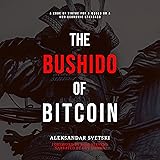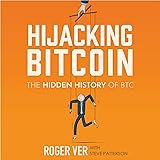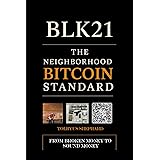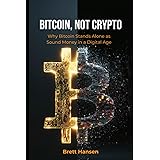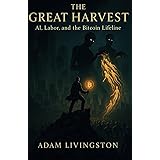Could the era of the U.S. Dollar as the world’s undisputed reserve asset truly be drawing to a close? As highlighted in the accompanying video, significant shifts are being observed on the global financial stage, with major players reportedly moving away from traditional U.S. Treasury holdings. This seismic shift is not merely a hypothetical scenario; rather, it is presented as a present-day reality, driven by powerful economic blocs and their strategic financial maneuvers. The core assertion being made is that a “neutral reserve era” is upon us, where assets like gold and Bitcoin are poised to become central to international finance.
Understanding the Evolving Global Reserve Asset Landscape
For decades, the United States Dollar has been the bedrock of the global financial system. Its stability and liquidity have allowed it to function as the primary currency for international trade, debt, and foreign exchange reserves. However, as the video suggests, this dominance is increasingly being questioned and challenged. A major contention is that the U.S. Treasury, once considered the safest and most liquid asset globally, is no longer regarded universally as the world’s unchallenged reserve asset.
A transition of this magnitude is not without historical precedent. Throughout history, different empires and nations have seen their currencies rise and fall as global standards. The British Pound Sterling, for instance, once held a similar stature before the two World Wars and subsequent economic shifts paved the way for the Dollar’s ascent. Now, many analysts suggest a similar inflection point may be upon us, with various geopolitical and economic factors contributing to this potential de-dollarization trend. Such a movement is often sparked by concerns regarding inflation, geopolitical weaponization of finance, and a desire for greater economic sovereignty among nations.
BRICS Nations Driving a New Monetary Paradigm
A key driver of this observed rotation out of U.S. debt and into alternative assets is the BRICS economic bloc. This group, comprising Brazil, Russia, India, China, and South Africa, represents a substantial portion of the world’s population and economic output. Their collective actions carry considerable weight in shaping global financial flows.
The Rationale Behind De-Dollarization Efforts
Firstly, the motivations behind the BRICS nations’ reported strategy are multifaceted. There is a growing desire among these nations to reduce their reliance on a single reserve currency, particularly one whose issuer’s monetary and foreign policies may not always align with their national interests. Geopolitical tensions and the use of financial sanctions have undoubtedly played a role in accelerating this sentiment. For instance, the video specifically mentions China and Russia as being at the forefront of this shift, with India “getting there.” These nations, often viewed as challengers to the established global order, are actively seeking avenues to protect their economies from potential external pressures and to foster a more multipolar financial system.
Sweeping Surplus into Neutral Assets
Secondly, the operational aspect of this strategy involves these nations taking their export profits and other financial surpluses and redirecting them away from traditional U.S. Treasury investments. Instead, these substantial sums are being “swept” into what are termed “neutral assets.” The concept of a neutral asset is critical here; it refers to an asset that is not controlled or heavily influenced by any single sovereign nation, thereby offering a perceived hedge against political interference, sanctions, or the inflationary monetary policies of a specific country. This approach is intended to provide greater financial stability and independence for the nations adopting it.
Gold and Bitcoin Emerge as Primary Neutral Assets
Within this evolving landscape, two distinct assets are being highlighted as the primary beneficiaries of this shift: gold and Bitcoin. Their roles, while different, are presented as complementary in the advent of a new neutral reserve era. Both are perceived as stores of value that exist outside the direct control of central banks, offering a form of financial sanctuary.
Gold’s Enduring Appeal in a New Era
Firstly, gold, with its thousands of years of history as a monetary asset and store of value, is expected to lead this movement. Gold’s tangible nature, scarcity, and universal acceptance mean it is often seen as the ultimate hedge against currency debasement and geopolitical instability. It is a time-tested anchor in periods of economic uncertainty, revered by central banks and individual investors alike. Its role as a foundational reserve asset is being re-emphasized as nations seek a safe haven that is uncorrelated with the policies of any single nation’s currency. The physical accumulation of gold by central banks, especially those within the BRICS bloc, has been a notable trend in recent years, signaling a deliberate strategic reallocation of reserves.
Bitcoin’s Transformative Potential as a Digital Reserve
Secondly, Bitcoin, the pioneering digital asset, is positioned to follow and subsequently outperform gold in this neutral reserve narrative. While gold represents the traditional, tangible form of neutrality, Bitcoin offers a modern, digital alternative. Its decentralized nature, fixed supply cap, and censorship resistance are qualities that resonate strongly with the concept of a neutral asset. Bitcoin is seen by proponents as “digital gold,” offering easier transferability across borders and a unique form of sovereignty in the digital realm. As global finance increasingly digitizes, Bitcoin’s role as a non-sovereign, permissionless store of value could become increasingly significant. It is posited that while gold may initially lead due to its historical trust and institutional familiarity, Bitcoin’s technological advantages and potential for higher appreciation could see it “win over the long tail,” becoming a dominant force in future global reserve strategies.
Broader Implications for the Future of Global Finance
The implications of such a significant rotation out of the US Dollar as a reserve asset are profound and far-reaching. If BRICS nations, and subsequently others, increasingly sweep their surpluses into gold and Bitcoin, it could lead to a rebalancing of global financial power. This shift could impact everything from international trade settlement mechanisms to the pricing of commodities and the stability of various national currencies. A more multipolar reserve system, characterized by several key currencies or neutral assets, might emerge, leading to a more complex but potentially more resilient global financial architecture. Furthermore, the role of central banks and their monetary policies would be significantly challenged, as the effectiveness of traditional tools might be diminished in an environment where a substantial portion of global wealth is held in assets outside their direct control. The conversation about a new global financial order, where the US Dollar’s long-standing supremacy is being actively diversified away, continues to gain momentum among major economic players worldwide.


